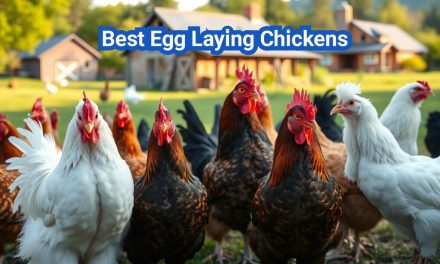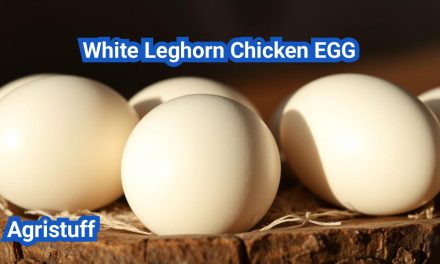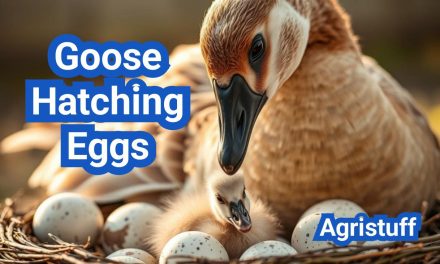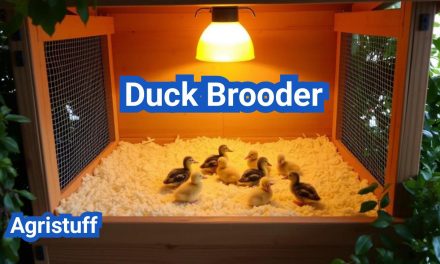The Jersey Giant Chicken is a notable breed, recognized as the largest chicken breed used for both meat and eggs. Developed between 1870 and 1890 by John and Thomas Black in New Jersey, this breed was created to rival turkeys in meat production.
Its massive size and dual-purpose use make it a valuable asset for farmers. The breed’s significance lies in its ability to provide both high-quality meat and eggs, making it a popular choice among farmers and backyard chicken keepers.
Key Takeaways
- The Jersey Giant Chicken is the largest chicken breed.
- It was developed in the late 19th century for meat production.
- This breed is known for its massive size and dual-purpose use.
- It provides both high-quality meat and eggs.
- The Jersey Giant Chicken is a valuable asset for farmers and backyard chicken keepers.
The History and Origin of Jersey Giant Chickens
Originating in Burlington County, New Jersey, the Jersey Giant Chicken was bred to be a substantial table bird. The breed was developed in the late 19th century by John and Thomas Black, who aimed to create a chicken that could rival turkeys in size and quality.
Development in Burlington County, New Jersey
The development of the Jersey Giant Chicken involved crossing several breeds, including Black Javas, Black Langshans, and Dark Brahmas. This careful breeding program resulted in a large, meaty chicken that was well-suited to the needs of farmers and consumers.
“The Jersey Giant was bred to be a premium table bird, and its development marked a significant achievement in poultry breeding,” as noted by poultry historians.
Original Purpose as a Meat Alternative to Turkeys
The original purpose of the Jersey Giant Chicken was to serve as a meat alternative to turkeys. At the time, turkeys were a staple of many meals, particularly during holidays. The Black brothers sought to create a chicken that could fulfill this role, providing a substantial and satisfying meal option.
The Jersey Giant Chicken’s size and meat quality made it an attractive alternative to turkey, and it quickly gained popularity among farmers and consumers.
Understanding the Jersey Giant Chicken Breed

Recognized by the American Poultry Association in 1922, the Jersey Giant Chicken has a rich history and specific breed characteristics. The Jersey Giant is classified as a dual-purpose breed, suitable for both meat and egg production.
Breed Classification and Recognition
The Jersey Giant Chicken breed is recognized by the American Poultry Association (APA) and is classified as a heavy breed due to its large size. The APA recognition came in 1922, marking its significance in the poultry world. The breed is available in three colors: black, white, and blue, each with its unique characteristics.
APA Standard of Perfection Requirements
The APA’s Standard of Perfection outlines specific requirements for the Jersey Giant breed. These include:
- Weight: Jersey Giants are expected to be heavy, with roosters weighing around 13 pounds and hens around 10 pounds.
- Comb: The breed should have a single comb with a specific number of points.
- Feathers: The feathers should be tight and well-fitting, with specific colors depending on the variety (black, white, or blue).
- Legs and feet: The legs should be sturdy and well-set apart, with toes that are well-defined.
The Jersey Giant’s adherence to these standards is crucial for its classification and recognition in poultry shows and breeding programs. The breed’s large size and gentle disposition make it a favorite among poultry enthusiasts.
Physical Characteristics of Jersey Giants
With their impressive size and robust physique, Jersey Giants stand out among other chicken breeds. Their substantial weight and size make them a notable choice for both meat and egg production.
Size and Weight Expectations
Jersey Giants are known for their large size, with mature roosters weighing between 13-15 pounds and hens weighing around 10-11 pounds. Roosters can reach heights of up to 26 inches, making them one of the tallest chicken breeds.
- Mature roosters: 13-15 pounds
- Mature hens: 10-11 pounds
- Maximum height: up to 26 inches
Body Structure and Appearance
The body structure of Jersey Giants is characterized by a muscular build and a rectangular shape. They have a broad, deep chest and well-feathered bodies, contributing to their overall robust appearance.
Their feathers are well-distributed, and they come in various colors, although the breed standard focuses on their size and structure rather than color.
Growth Rate and Development Timeline
Jersey Giants have a relatively slow growth rate compared to other meat breeds. They typically take around 6-8 months to reach maturity, with some individuals continuing to grow until they are about a year old.
- Hatch to 8 weeks: rapid growth phase
- 8-16 weeks: continued growth, start of feathering
- 16-24 weeks: approaching maturity
This slow and steady growth contributes to their robust health and the quality of their meat.
Jersey Giant Chicken Colors and Varieties

Jersey Giant chickens come in a variety of colors, each with its unique charm and characteristics. The breed is recognized in three main colors: black, white, and blue.
Black Jersey Giants
The black Jersey Giant is perhaps the most common variety. They have a lustrous black plumage that can sometimes show a green sheen in the right light. Black Jersey Giants are prized for their striking appearance and are a popular choice among backyard chicken keepers.
Blue Jersey Giants
Blue Jersey Giants have a slate-blue color that is evenly distributed throughout their plumage. The blue coloration is a result of a genetic dilution of black pigment, and it’s a unique feature that sets them apart from other breeds.
White and Splash Jersey Giants
White Jersey Giants are characterized by their pure white plumage, while Splash Jersey Giants display a pattern of white mixed with black or blue, creating a “splash” effect. Both varieties are less common than the black but are equally charming.
| Color Variety | Description | Popularity |
|---|---|---|
| Black | Lustrous black plumage, sometimes with a green sheen | High |
| Blue | Slate-blue color, evenly distributed | Moderate |
| White | Pure white plumage | Moderate |
| Splash | White mixed with black or blue, creating a “splash” effect | Low |
The diversity in colors among Jersey Giants adds to their appeal as a breed that can offer both aesthetic pleasure and practical benefits, such as eggs and meat. Whether you’re drawn to the sleek black, the unique blue, or the striking white and splash varieties, Jersey Giants are sure to be a delightful addition to any flock.
Temperament and Behavior of Jersey Giants
The temperament of Jersey Giant chickens is one of their most appealing characteristics, showcasing a unique blend of docility and friendliness. These birds are known for their calm and gentle nature, making them an excellent choice for backyard flocks, especially for those who are new to raising chickens.
Personality Traits and Handling
Jersey Giants are often described as having a friendly and docile temperament. They are generally easy to handle and can become quite tame, enjoying human interaction. Their calm nature makes them a great breed for families with children, as they are less likely to be aggressive.
Key Personality Traits:
- Friendly and docile
- Easy to handle
- Calm and gentle
- Tame and enjoys human interaction
Interaction with Other Chickens and Pets
Jersey Giants generally get along well with other chickens and pets, especially if they are socialized from a young age. Their docile nature helps them integrate into existing flocks with minimal conflict. However, as with any breed, it’s essential to monitor their interactions, especially during the initial introduction phase.
Tips for Introducing Jersey Giants to Other Pets:
- Start with visual introductions from a distance
- Gradually increase face-to-face interactions under supervision
- Monitor behavior and body language
| Trait | Description | Benefit |
|---|---|---|
| Docility | Calm and gentle nature | Ideal for families and beginners |
| Friendliness | Enjoys human interaction | Easy to handle and tame |
| Socialization | Gets along with other chickens and pets | Integrates well into existing flocks |
How to Maximize Jersey Giant Egg Production

Maximizing egg production from Jersey Giant hens requires a comprehensive approach that includes proper nutrition, optimal lighting, and effective health management. These gentle giants are capable of laying around 150-200 eggs per year, with colors ranging from dark brown to light cream.
Egg Color, Size and Quality
Jersey Giant chickens are known for their large to extra-large eggs, which are not only a delight to collect but also a testament to the breed’s dual-purpose nature. The eggs are typically brown, varying in shade from a deep, rich brown to a lighter, more cream-colored brown. Ensuring that your hens receive a balanced diet rich in calcium and protein is crucial for maintaining high-quality eggshells and a consistent laying schedule.
The quality of the eggs is also influenced by the health and well-being of the hens. Factors such as stress, nutrition, and disease can affect egg production and quality. For instance, a diet lacking sufficient calcium can lead to weak or thin-shelled eggs.
Strategies to Improve Laying Frequency
To improve laying frequency, it’s essential to provide your Jersey Giant hens with a nutritious diet that includes a mix of grains, proteins, and supplements. Ensuring access to fresh water at all times is also vital. Additionally, maintaining a stress-free environment by providing adequate space and reducing flock density can significantly impact egg production.
Lighting is another critical factor. Hens require a certain amount of daylight to maintain their laying cycle. During the shorter days of winter, supplementing natural light with artificial lighting can help sustain egg production.
| Strategy | Description | Impact on Egg Production |
|---|---|---|
| Nutritious Diet | Balanced feed with grains, proteins, and supplements | High |
| Adequate Lighting | Ensuring sufficient daylight or supplemental lighting | High |
| Stress Reduction | Providing enough space and reducing flock density | Moderate |
| Health Management | Regular health checks and disease prevention | High |
Managing Seasonal Variations in Production
Jersey Giant hens, like many other breeds, experience variations in egg production due to seasonal changes. During the winter months, egg production may decrease due to shorter daylight hours and colder temperatures. To mitigate this, providing supplemental lighting and ensuring the coop remains warm and draft-free can help.
In the summer, heat stress can become a concern. Ensuring adequate ventilation and providing cool water can help keep your hens comfortable and maintain their egg-laying potential.
Raising Jersey Giants for Quality Meat

Producing high-quality meat from Jersey Giants involves understanding their growth timeline and butchering age. Jersey Giants are a popular choice for meat production due to their size and growth rate, making them an excellent alternative to traditional meat breeds.
Growth Timeline for Optimal Meat Production
Jersey Giants are known for their slow growth rate, which requires patience but results in a more significant amount of meat. The growth timeline for Jersey Giants is as follows:
- 0-4 weeks: Chicks grow rapidly, and it’s essential to provide them with a starter feed rich in protein.
- 4-12 weeks: Grower feed is introduced, and the birds continue to grow, albeit at a slower rate.
- 12-20 weeks: The birds are now considered juveniles, and their growth rate slows down further.
- 20 weeks and beyond: The birds are now mature and ready for meat production.
Butchering Age and Meat Yield Expectations
The ideal butchering age for Jersey Giants is between 6 to 9 months, when they have reached their optimal weight. At this stage, the meat yield is significant, making them an excellent choice for meat production.
Here are some key factors to consider when butchering Jersey Giants:
- Meat yield: Jersey Giants can provide a substantial amount of meat, with males weighing up to 13 pounds and females weighing up to 10 pounds.
- Meat quality: The meat is known for being tender and flavorful, making it a popular choice among consumers.
- Processing: It’s essential to process the birds humanely and efficiently to ensure the highest quality meat.
By understanding the growth timeline and butchering age of Jersey Giants, producers can optimize their meat production and provide high-quality products to consumers.
How to Set Up Proper Housing for Jersey Giant Chickens

Jersey Giant chickens require specialized housing due to their large size and specific needs. Providing the right environment is crucial for their health, safety, and productivity.
Space Requirements for These Giant Birds
Jersey Giants are one of the largest chicken breeds, and they need ample space to move around comfortably. A minimum of 10 square feet per bird inside the coop is recommended, with even more space required in the outdoor run.
- Ensure at least 10 square feet per bird inside the coop.
- Provide a minimum of 20 square feet per bird in the outdoor run.
- Consider additional space for feeding and roosting areas.
Coop Design and Roost Specifications
The coop design should accommodate the Jersey Giant’s size and weight. Sturdy construction and high roosts are essential to prevent strain on their legs and to keep them comfortable.
When designing the coop, consider the following:
- Use durable materials that can withstand the size and weight of Jersey Giants.
- Install roosts that are at least 2×4 inches in size and elevated to prevent roosting on the floor.
- Ensure easy access for cleaning and egg collection.
Building a Predator-Proof Run
A predator-proof run is critical to protect your Jersey Giants from potential threats. The run should be securely fenced and covered to prevent aerial predators.
Key considerations for a predator-proof run include:
- Using hardware cloth with openings of 1 inch or less.
- Burying the fencing material at least 12 inches underground to prevent digging.
- Covering the top of the run with netting or chicken wire.
By following these guidelines, you can create a safe and comfortable housing environment for your Jersey Giant chickens, ensuring their health and productivity.
Nutrition Guide for Healthy Jersey Giants

A nutritious diet is essential for Jersey Giants to thrive and reach their full potential. As one of the largest chicken breeds, they have unique nutritional needs that must be met to support their growth and overall health.
Feed Types and Quantities for Different Life Stages
Jersey Giants require different types of feed at various stages of their life. For young chicks, a starter feed rich in protein (around 20%) is crucial for development. As they grow, the protein content can be gradually reduced.
- Starter Feed (0-8 weeks): 20% protein
- Grower Feed (8-16 weeks): 16-18% protein
- Layer Feed (18 weeks and beyond): 16% protein, with added calcium for egg production
It’s also important to monitor their consumption. Jersey Giants are known to eat more than smaller breeds, so ensuring they have access to enough feed without overfeeding is crucial.
“The key to successful Jersey Giant nutrition is providing a balanced diet that supports their growth without overfeeding.”
Essential Supplements for Bone Health and Growth
In addition to a balanced feed, certain supplements can support the health and growth of Jersey Giants. Calcium and phosphorus are crucial for bone development, especially in young birds.
- Calcium: Essential for strong eggshell production and bone health
- Phosphorus: Important for bone development and overall health
- Probiotics: Supports gut health and immune system
Creating an Effective Feeding Schedule
Establishing a consistent feeding schedule is vital for the health of Jersey Giants. This involves not only providing the right feed at the right time but also ensuring access to fresh water at all times.
Tips for an effective feeding schedule:
- Feed at the same times each day to establish a routine
- Monitor feed consumption to avoid overfeeding
- Adjust feed types according to the life stage of the birds
By following these guidelines, you can create a nutrition plan that supports the health and well-being of your Jersey Giants.
Managing Jersey Giant Chicken Health

Ensuring the health and well-being of Jersey Giant chickens involves understanding their specific needs and potential health challenges. While generally hardy, these birds require proactive health management to prevent common issues and optimize their productivity.
Preventing Common Health Issues
Jersey Giants, like other chicken breeds, are susceptible to certain health issues, including respiratory infections, parasites, and reproductive problems. Regular health checks are crucial for early detection and intervention.
- Monitor for signs of illness, such as lethargy, loss of appetite, or unusual droppings.
- Maintain a clean and dry living environment to reduce the risk of disease.
- Provide a balanced diet that meets their nutritional needs.
Techniques for Managing Heat Stress
Jersey Giants can be prone to heat stress due to their large size and thick feathering. Managing heat stress is critical, especially during hot summer months.
- Ensure access to plenty of cool water and shade.
- Provide a cool, well-ventilated coop.
- Consider using cooling measures such as misting systems.
Recommended Vaccination and Parasite Control
Vaccination and parasite control are essential components of a comprehensive health management plan for Jersey Giants.
| Health Measure | Purpose | Frequency |
|---|---|---|
| Vaccination against common diseases | Prevent disease outbreaks | As recommended by a veterinarian |
| Parasite control measures | Control internal and external parasites | Regularly, based on parasite load |
By implementing these health management strategies, you can help ensure the well-being and productivity of your Jersey Giant chickens.
Breeding Jersey Giant Chickens Successfully

Successfully breeding Jersey Giants involves careful planning and attention to detail in selecting breeding stock. Breeding these large and gentle birds requires a comprehensive understanding of their specific needs and characteristics.
Selecting Quality Breeding Stock
Choosing the right breeding stock is crucial for the success of your Jersey Giant breeding program. Look for birds that exhibit the breed’s characteristic traits, such as large size, robust health, and a friendly temperament. Ensure that the birds are free from genetic disorders and have a strong lineage.
- Evaluate the health and vigor of potential breeding birds.
- Select birds with the desired breed characteristics.
- Consider the genetic diversity of your breeding stock.
Incubation and Hatching Techniques
Incubation is a critical phase in the breeding process. Use a reliable incubator and maintain consistent temperature and humidity levels. Regularly turn the eggs to prevent the embryo from sticking to the shell.
Key Incubation Parameters:
- Temperature: 99.5°F (37.7°C)
- Humidity: 50-60% relative humidity
- Turning: At least 3 times a day
Raising Jersey Giant Chicks
After hatching, provide the chicks with a warm and safe environment. Ensure they have access to fresh water and starter feed. Monitor their health closely and take action promptly if you notice any signs of illness.
- Provide a brooder with adequate heat and ventilation.
- Feed a high-quality starter feed.
- Monitor chick health daily.
By following these guidelines, you can successfully breed Jersey Giant chickens and enjoy the rewards of raising these magnificent birds.
Jersey Giant Chickens vs. Other Heritage Meat Breeds

The Jersey Giant breed is a popular choice among poultry keepers looking for a dual-purpose chicken, but how does it compare to other heritage breeds? When evaluating heritage meat breeds, factors such as size, growth rate, egg production, and temperament are crucial.
Comparing to Brahmas and Cochins
Brahmas and Cochins are well-known heritage breeds often used for meat production. While they share some similarities with Jersey Giants, there are significant differences:
- Size and Growth Rate: Jersey Giants are one of the largest chicken breeds, with roosters weighing up to 22 pounds. Brahmas and Cochins are also large, but Jersey Giants generally grow faster.
- Temperament: Jersey Giants are known for their friendly and docile nature, similar to Brahmas and Cochins, making them suitable for family farms.
- Egg Production: While all three breeds are considered dual-purpose, Jersey Giants lay a significant number of large brown eggs, comparable to the production levels of Brahmas and Cochins.
Advantages Over Other Dual-Purpose Breeds
Jersey Giants have several advantages over other dual-purpose breeds:
- Rapid Growth: They reach market weight quickly, making them efficient for meat production.
- High Egg Production: They lay a substantial number of eggs annually, providing a good return on investment for those looking for a dual-purpose breed.
- Hardiness: Jersey Giants are known for their robust health and ability to adapt to various climates.
In conclusion, while breeds like Brahmas and Cochins have their strengths, Jersey Giants offer a compelling combination of size, growth rate, and egg production, making them a valuable choice for many poultry keepers.
Cost Analysis of Jersey Giant Ownership
Understanding the financial commitment required to own Jersey Giant chickens is crucial for potential owners. The cost of owning these large birds involves not only the initial purchase price but also ongoing expenses such as feed, healthcare, and maintenance of their housing.
Initial Purchase Price and Chick Sources
The initial cost of acquiring Jersey Giant chickens can vary based on several factors, including the source, age, and quality of the birds. Purchasing chicks from a reputable hatchery can cost between $3 to $5 per chick, depending on the hatchery’s reputation and the chicks’ quality. “Investing in high-quality chicks from a trusted source can significantly impact the overall health and productivity of your flock,” notes an experienced poultry breeder.
For those looking to start with older birds, pullets (young hens) can be more expensive, with prices ranging from $15 to $30 per bird. The cost can be higher for birds that are closer to laying age or for those with specific lineage or breeding.
Long-term Maintenance and Feed Costs
One of the significant ongoing expenses for Jersey Giant owners is feed. These large birds consume more feed than smaller breeds, which can increase the cost of maintaining them. On average, a Jersey Giant can consume about 4-6 pounds of feed per week, with the cost of feed varying depending on the quality and type. “The key to maintaining healthy and productive Jersey Giants is providing them with a balanced diet that meets their nutritional needs,” emphasizes a poultry nutrition expert.
Other long-term costs include healthcare expenses, such as vaccinations and parasite control measures, as well as the cost of maintaining their housing. Ensuring that the coop and run are predator-proof and well-ventilated is crucial for the health and safety of the flock.
In conclusion, while the initial purchase price of Jersey Giants is just the beginning, understanding and budgeting for the long-term costs are essential for the successful ownership of these birds.
Where to Buy Quality Jersey Giant Chickens
Purchasing Jersey Giant chickens from the right sources ensures their health and quality. It’s essential to buy from reputable suppliers to guarantee that you’re getting birds that are not only healthy but also meet the breed standards.
Reputable Hatcheries and NPIP Certified Sources
One of the most reliable ways to acquire Jersey Giant chickens is through NPIP (National Poultry Improvement Plan) certified hatcheries. NPIP certification ensures that the hatcheries adhere to strict standards regarding the health and quality of the poultry they supply.
When searching for a hatchery, look for those that are transparent about their breeding practices, provide detailed health guarantees, and have a good reputation among poultry keepers. Some well-known hatcheries that may carry Jersey Giants include:
| Hatchery Name | NPIP Certified | Shipping Information |
|---|---|---|
| Example Hatchery | Yes | Ships nationwide within 3 days |
| Another Hatchery | Yes | Ships within the continental US |
What to Look for When Selecting Birds
When selecting Jersey Giant chickens, it’s crucial to inspect the birds for signs of good health and adherence to breed standards. Look for birds that are active, have bright eyes, and show no signs of illness or injury.
Key characteristics to look for include:
- Vibrant plumage consistent with the breed standard
- Strong legs and well-formed feet
- Alert and active demeanor
Additionally, consider the breeder’s or hatchery’s reputation and their willingness to provide health guarantees or support.
Is the Jersey Giant Right for Your Flock?
After exploring the various aspects of Jersey Giant chickens, it’s clear that this breed offers a unique combination of size, temperament, and productivity. Their large size and gentle nature make them an attractive addition to many flocks.
When considering Jersey Giant suitability for your flock management, several factors come into play. Their egg-laying abilities, meat production potential, and foraging capabilities are significant advantages. However, their large size also means they require more space, food, and specific care.
To determine if Jersey Giants are right for your flock, assess your available resources, including space, feed, and handling capabilities. If you can provide the necessary conditions, Jersey Giants can be a valuable and rewarding addition, offering both eggs and meat.
Ultimately, the decision to include Jersey Giants in your flock should be based on a careful evaluation of their characteristics and your specific needs. With proper care and management, Jersey Giants can thrive and provide numerous benefits.
FAQ
What is the origin of the Jersey Giant Chicken breed?
The Jersey Giant Chicken breed was developed in the late 19th century in Burlington County, New Jersey, with the goal of creating a premium table bird that could rival turkeys in size and quality.
What are the different colors of Jersey Giant Chickens recognized by the APA?
The APA recognizes three colors for the Jersey Giant breed: black, white, and blue, each with specific characteristics that adhere to the APA’s Standard of Perfection.
How large do Jersey Giant Chickens get?
Jersey Giants are known for their impressive size, with roosters reaching up to 26 inches in height and weighing between 13-15 pounds, while hens are slightly smaller.
Are Jersey Giant Chickens good layers?
Yes, Jersey Giant hens are good layers, but their egg production can be influenced by factors such as nutrition, lighting, and health management.
What are the benefits of raising Jersey Giants for meat?
Jersey Giants provide a significant amount of meat due to their large size, making them a good choice for those looking to raise chickens for meat production.
How should I house my Jersey Giant Chickens?
Jersey Giants require more spacious coops and runs due to their large size, and the housing should be designed to be predator-proof.
What are the nutritional needs of Jersey Giants?
Jersey Giants require a balanced diet that includes the right mix of proteins, vitamins, and minerals to support their growth and overall health.
How can I manage the health of my Jersey Giants?
Regular health checks, proper vaccination, and parasite control are essential to maintaining the health of Jersey Giants.
Can Jersey Giants be bred successfully?
Yes, Jersey Giants can be bred successfully by selecting healthy breeding stock and using proper incubation and hatching techniques.
How do Jersey Giants compare to other heritage meat breeds?
Jersey Giants have their unique advantages in terms of size and growth rate compared to other heritage meat breeds like Brahmas and Cochins.
What are the costs associated with owning Jersey Giants?
The costs include the initial purchase price of chicks, ongoing expenses for feed, and healthcare.
Where can I buy quality Jersey Giant Chickens?
You can buy quality Jersey Giants from NPIP certified hatcheries, which ensure the health and quality of the birds.
What color eggs do Jersey Giants lay?
Jersey Giants lay brown eggs, with the exact shade varying depending on the individual hen.
Are Jersey Giants suitable for backyard flocks?
Yes, Jersey Giants can be suitable for backyard flocks due to their friendly and calm nature, but their large size and specific needs should be considered.
Conclusion of: Jersey Giant Chicken
Introduction: Why the Jersey Giant Chicken stands out
The Jersey Giant Chicken is revered among backyard keepers and homesteaders for being the largest standard chicken breed in the U.S., delivering impressive table birds and steady egg production with a calm, friendly temperament—an appealing dual-purpose option for American flocks. Livestock Conservancy breed profile
Origin & development of the Jersey Giant Chicken
Created by brothers John and Thomas Black in New Jersey (late 1800s), the Jersey Giant Chicken was intentionally bred to rival turkeys for the family table, using Black Java, Black Langshan, and Dark Brahma bloodlines to achieve massive size and good foraging ability. Oklahoma State Univ. – Breeds of Livestock
Recognition & accepted color varieties
The Jersey Giant Chicken earned American Poultry Association (APA) recognition in 1922 (black), with white added in 1947 and blue in 2003—today officially accepted in three varieties for exhibition and breed standardization across the U.S. APA recognition dates via Livestock Conservancy
Size, weight & build: what “giant” really means
At maturity, a Jersey Giant Chicken cock commonly reaches 13–15 lb and hens 10–11 lb, with a broad, deep, rectangular frame; this mass brings great meat yield but requires thoughtful housing and management. Standard weights (Conservancy)
Growth rate & time to table
Unlike modern broilers, the Jersey Giant Chicken is a heritage breed that grows steadily; many birds take roughly 8–9 months to develop balanced body proportions for roasting or capon use—excellent eating, but slower feed-to-meat conversion than commercial crosses. Growth & meat notes
Egg production & egg characteristics
Despite their size, a typical Jersey Giant Chicken hen lays about 150–200 extra-large brown eggs annually and is known to keep laying through winter; some hens go broody, though their weight can make setting tricky. Egg numbers & broody notes
Temperament, handling & flock fit
Calm and generally friendly, the Jersey Giant Chicken integrates well into mixed flocks and rarely flies due to its weight, making it a solid choice for families wanting gentle birds that still deliver meat and eggs. Temperament overview
Space planning: coop, run & nesting
Because of their bulk, each Jersey Giant Chicken benefits from generous space: common small-flock guidance is roughly 3–5 ft² per standard bird indoors and one nest box per 4–5 hens, plus good ventilation for year-round comfort. UMN Extension – housing & nests
Roosting safely for heavy birds
The heavy frame of a Jersey Giant Chicken needs low, sturdy roosts (or even platform perches) to avoid hard landings and foot injury; some extension guidance cautions against using narrow perches for large/meaty breeds. Penn State Extension – perches & space
Outdoor run design & predator protection
For a roaming Jersey Giant Chicken, plan a secure run (e.g., ~4–5 ft² per bird outside for small flocks) and predator-proof with strong wire, hardware cloth, and a buried skirt at least several inches to deter diggers. Cornell Cooperative Extension – backyard flocks
Feeding the giant: nutrition & costs
The Jersey Giant Chicken eats more than lighter layers; use complete feeds by life stage (starter/grower/layer), ensure 2.5–3.5% calcium for active layers, and remember feed often represents ~70% of small-flock costs. UMaine Extension – nutrition & budget realities
Health & foot care for big birds
Because the Jersey Giant Chicken is heavy, keep litter dry, minimize sharp edges under roosts to reduce bumblefoot risk, vaccinate as advised, and maintain biosecurity to limit common backyard diseases. Univ. of Maryland Extension – backyard chicken diseases
Heat & cold management
Cold-hardy but heat-sensitive, the Jersey Giant Chicken needs shade, airflow, and cool water during hot spells; watch for panting and wings held out, and add fans or misters when extreme heat threatens. Poultry Extension – heat stress
Processing meat birds at home
When raising the Jersey Giant Chicken for the table, follow state regulations and best-practice sanitation, chilling, and packaging techniques to ensure quality and food safety during home processing. NC State Extension – processing your birds at home
Breeding & color genetics (Blue/Black/Splash)
Selective breeding keeps the Jersey Giant Chicken in standard color varieties; with the Andalusian “Blue” gene, blue × blue typically yields a mix of blue, black, and splash offspring due to incomplete dominance. Poultry Science (1944) – classic blue-gene ratios
Buying chicks: NPIP & sourcing
To start a Jersey Giant Chicken flock, purchase from reputable hatcheries or breeders and look for NPIP participation (disease-testing standards) to support flock health from day one. USDA APHIS – National Poultry Improvement Plan
Local rules, roosters & neighbors
Before adding a Jersey Giant Chicken to your property, verify city and HOA rules (many limit flock size or ban roosters) and plan noise/space accordingly to stay compliant and neighbor-friendly. NC Cooperative Extension – keeping garden chickens
Economics: feed-to-meat reality for giants
As a slower-maturing heritage bird, the Jersey Giant Chicken excels in flavor and carcass size but won’t match industrial broilers on cost per pound; budget feed, bedding, and processing using small-flock enterprise calculators. Penn State Extension – poultry business management
How the Jersey Giant Chicken compares to other heavy breeds
Versus Brahmas, Cochins, and other large birds, the Jersey Giant Chicken is typically heavier, calmer than many gamey strains, and better for winter laying—yet requires more feed and sturdier housing than lighter dual-purpose breeds. OSU breed overview (for comparison context)
Quick management checklist for success
For a thriving Jersey Giant Chicken flock: choose ample coop/run space, use low/wide roosts or platforms, provide balanced feed by life stage with free-choice calcium for layers, add shade/ventilation in summer, and keep predator protection tight. UMN Extension – small-flock best practices
Final thought
If you want a gentle, outsized backyard bird that can feed a family and keep breakfast plates full, the Jersey Giant Chicken delivers—provided you match its size with thoughtful housing, nutrition, and heat management for long-term, reliable performance. Jersey Giant at Livestock Conservancy
Sources & References
- The Livestock Conservancy – Jersey Giant Chicken
- Oklahoma State University – Breeds of Livestock: Jersey Giant
- American Poultry Association – Accepted Breeds & Varieties
- University of Minnesota Extension – Raising Chickens for Eggs
- Cornell Cooperative Extension – Backyard Chickens
- University of Maine Extension – Nutrition for Backyard Flocks
- Penn State Extension – Space & Perches Guidance
- Poultry Extension – Managing Heat Stress
- USDA APHIS – National Poultry Improvement Plan (NPIP)
- NC State Extension – Processing Your Birds at Home
- Poultry Science (1944) – Blue Andalusian Gene & Ratios
- NC Cooperative Extension – Keeping Garden Chickens










